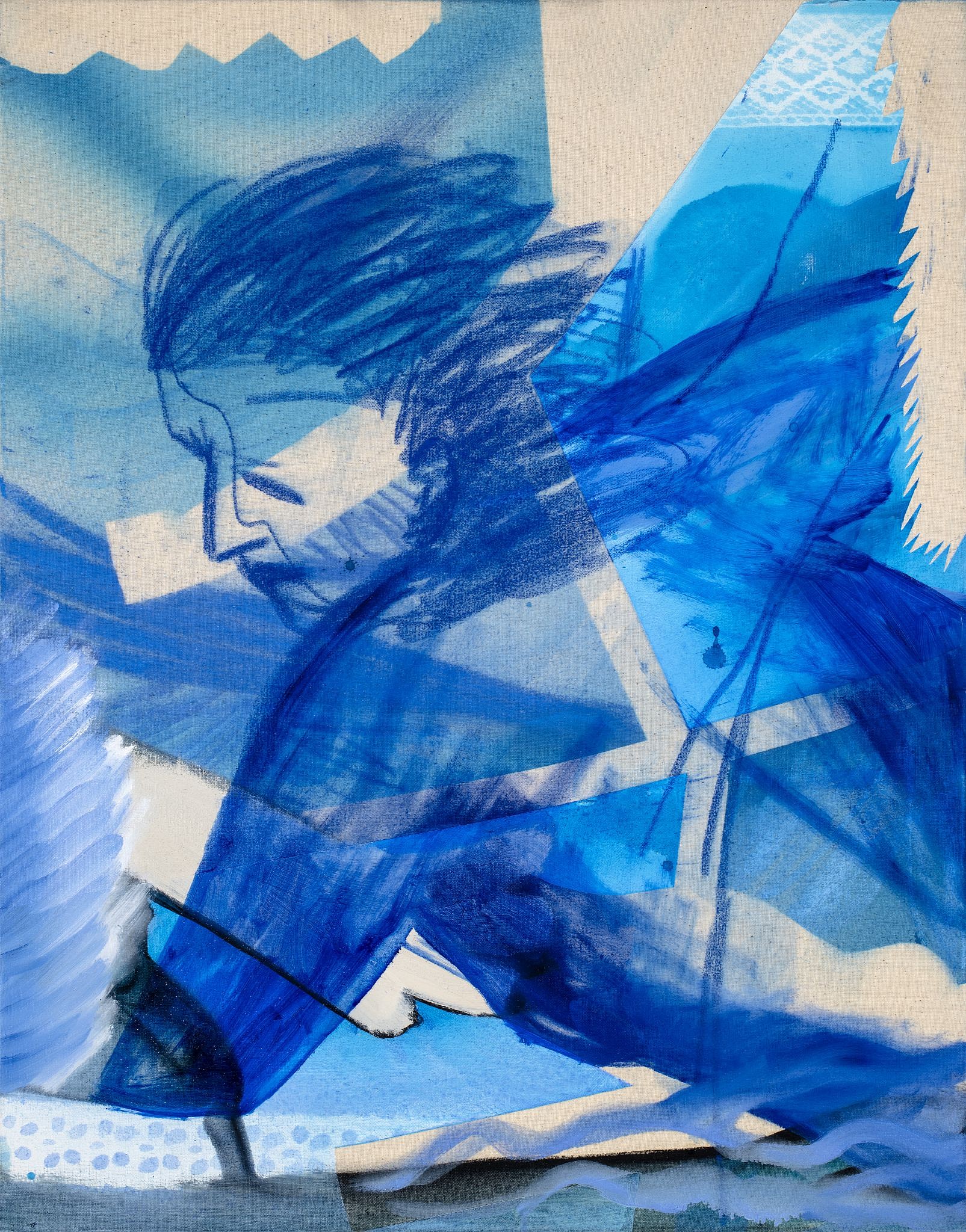PRESS RELEASE

In the Hall of Muses / Sara Benninga
Sep 7, 2023 – Jan 25, 2024
By Hadas Glazer
The works in Sara Benninga’s solo exhibition, In the Hall of the Muses, entwine drawing and painting, figures and patters, exposed canvas and opaque layers of colors in an encounter that shifts between disintegration and cohesion. Looking at Benninga’s paintings evokes a sense of mystery: The paintings draw the viewers straight to the artistic, material, and visual heart, while also demanding an engaged and active viewing. The pictorial world she unfolds is populated by figures in complex relationships and diverse situations – camaraderie, aggression, physicality, movement, sexuality, leisure, and voyeurism. Within and beyond the boundaries of each figure, there are overlapping parts of other figures, concealing and exposing one another. And so, the main conundrum in the painting is: Where should we look first? What precedes what? And what is more important? With that, the paintings challenge the sense of certainty we gain from direct observation, introducing questions about how we search and bestow meaning in the world of images around us.
Benninga works with a wide range of techniques and materials, from chalk and oil color to spray paint and printing. Her work is also deeply informed by art history, since in addition to being a painter, she also holds a PhD in the history of art. Out of her deep familiarity with the history of painting, the artist undermines its conventions and hierarchies. Thus, for instance, the power dynamic between figures and elements is ambiguous, as the separation between figure and background is eliminated, and each element can take on every pictorial role; figures are duplicated and at times can become a pattern; there is no single perspective or one vanishing point; and large parts of the canvas are left completely exposed, serving as another color in the composition. This wealth allows her to elaborate and develop her techniques, creating new combinations. Each painting is done following a pre-determined limited color palette, usually blue, sanguine red or black, while occasionally these are joined and mixed with other colors. And so, in each series of works, there are links between the various paintings, which function together and separately, like words in a sentence.
The exhibition’s title refers to the Hall of the Muses in the Vatican Museums, where statues of mythological gods and muses are displayed side by side. While the statues are Roman (often based on a Greek original), the hall itself, whose walls are painted in a bold Pompeian red, was created in the 18th century. Stepping into it, the hall evokes in the visitors a deep emotional and physical experience of beauty and awe, abundance and grandeur, fascination and wonder. Invoking this overwhelming experience, Benninga wishes to underscore the fact that the interpretive, religious, artistic, and historical excess that surrounds the place and the artworks fades in the face of the viewers’ physical and visual experience in the gallery.
The paintings draw from historical, artistic, personal, and imaginary sources of inspiration. Benninga often references Old Masters paintings, mostly from the Renaissance, “extracting” figures from the historical scenes and marrying them to figures from other sources: ones that originate in life drawing in her studio, and others drawn from her imagination. The figures and body parts are joined by patterns, plants, shapes and lines. Viewing the painting reveals a “competition” for the viewer's attention between the figures and the various elements, techniques and inspirations, when at times it is hard to identify the clear hierarchy at the basis of the painting. The experimental nature of the work offers introspection and contemplation, pulling the gaze in while simultaneously obstructing and pushing it out.

